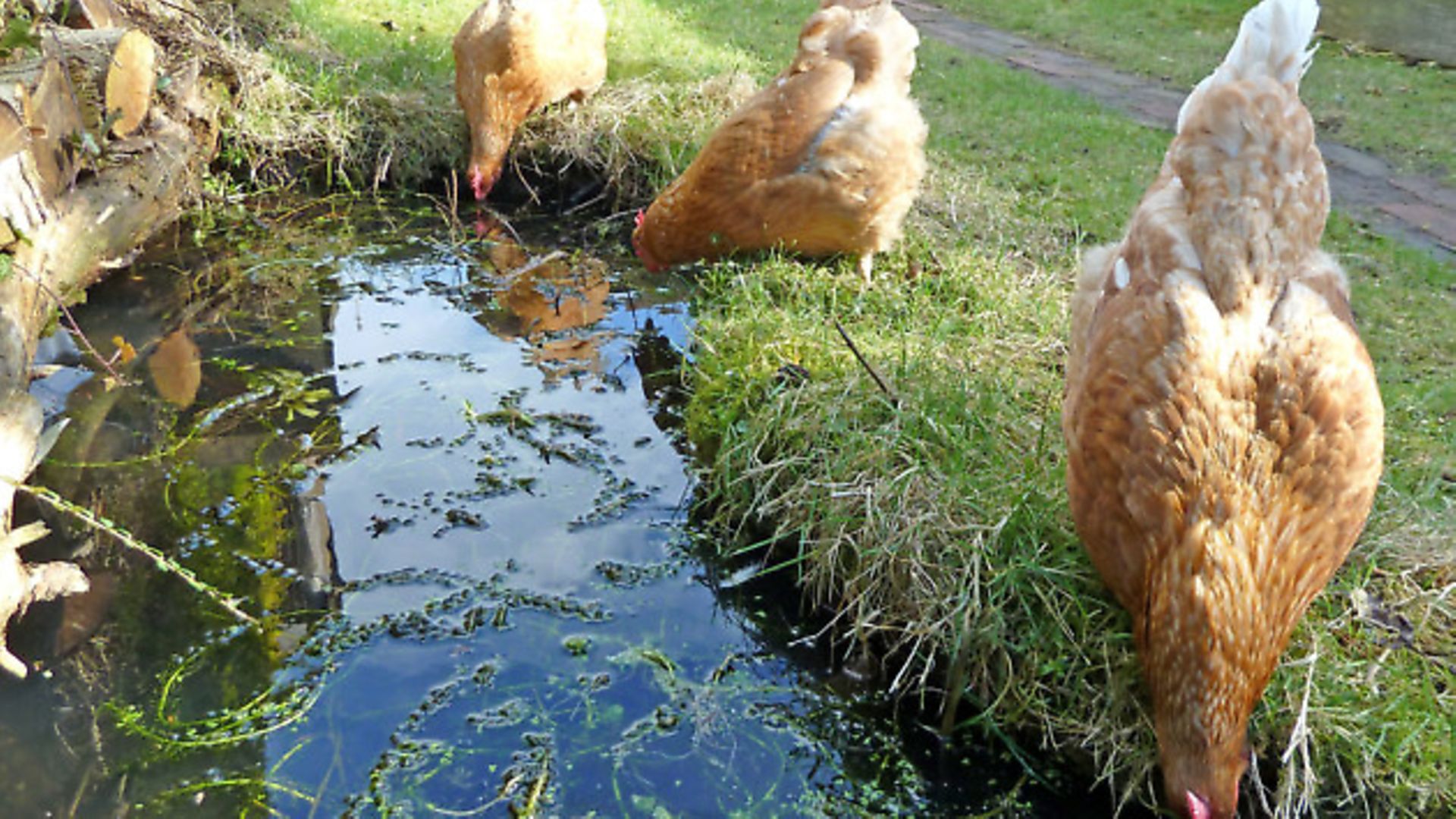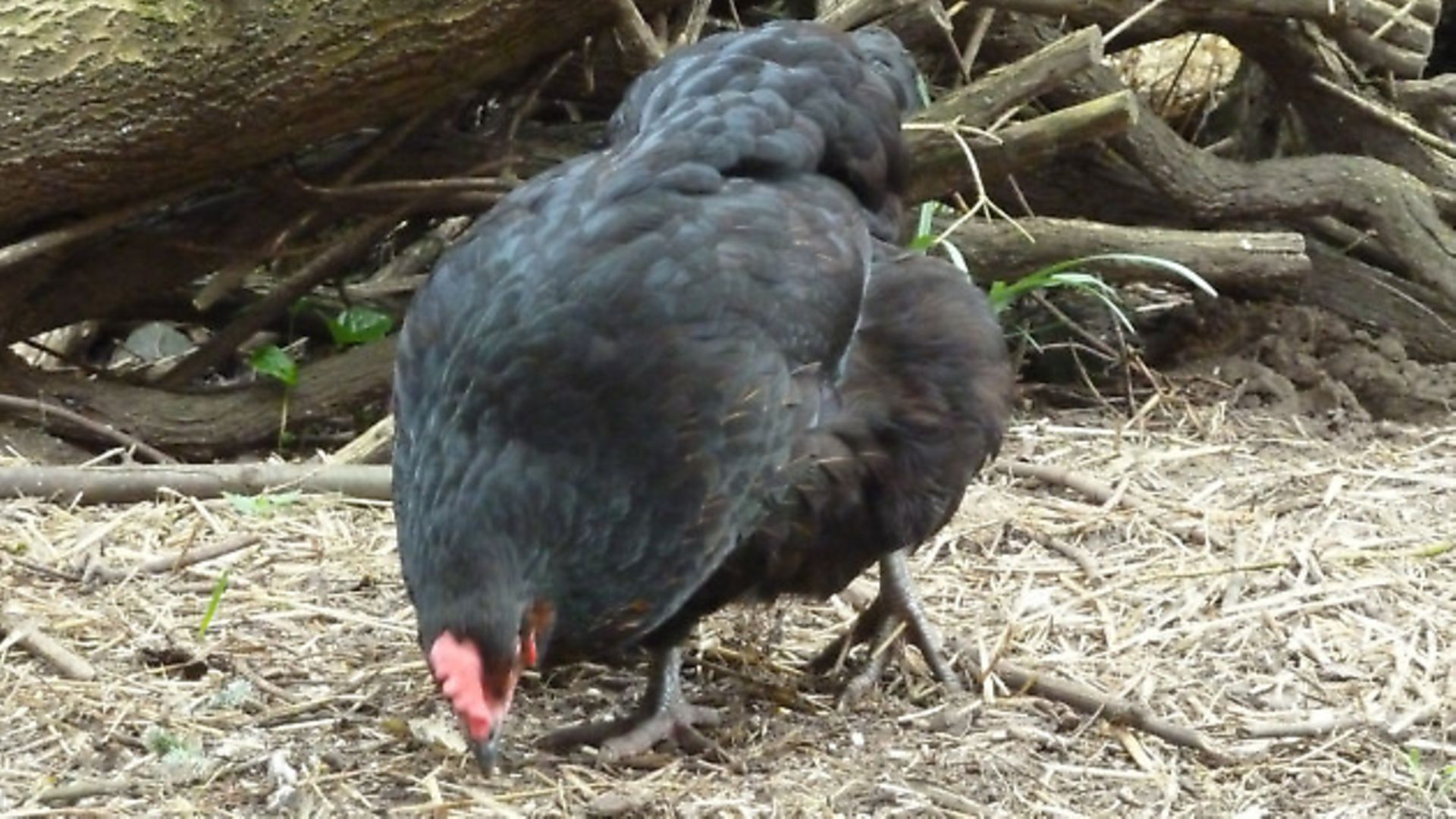Creating an environment that allows chickens to forage for food is more natural, stimulating and healthy, argues Kate Fox

All modern day chicken breeds descend from the Jungle Fowl which roam around forests foraging for food. This poses the question of whether the chickens we own can be kept in a system that mimics this to some extent; this would be more natural, stimulating and healthier for the chickens, more ecologically sound and potentially less work for us.

Chickens are omnivores and naturally eat a varied diet to meet their needs for protein, energy and nutrients. They eat herbaceous plants, grains/seeds and meat (mainly in the form of insects and worms). However they can only meet about 10% of their dietary needs by grazing on herbaceous plants such as grass and, given the choice, they tend to prefer browsing on insects to plant life, probably because of the higher protein content. Generally speaking chicks and layers require more protein.
Manufactured chicken feed is carefully balanced to provide all their nutritional needs through grain mixtures and it is tailor made to suit layers, meat birds or chicks.
CHICKEN SCAVENGING AND CHICKEN FORAGING
Scavenging and foraging are quite closely related; a simple definition would be that scavenging is where the chickens find food connected to man’s activities and foraging is where they browse in natural habitats – ie trees and shrubs shed seeds and fruit onto the ground where insects will also be hiding. Having a mixture of the two would greatly increase the variety and interest of the chickens’ diet.
Many people supplement chicken feed with kitchen scraps – another source of scavenging – unfortunately it is not technically legal to feed chickens with food that has passed through the kitchen. There are several other sources of scavenging that can be made available to the chickens:
Veg garden: with access to the compost heap chickens will scratch about and find brandling worms to eat. Limited access would be best so that they don’t eat all the compost too, or maybe access to ground that has had compost put on it so that they can help spread it around in the process. They can also be used to graze off green manures and can be put on empty veg beds prior to planting to scratch around for slug eggs, grubs and insects.
Grain fields: access to fields after harvest will allow the chickens to mop up any grain that has been missed.
Other livestock: chickens will scratch about in cowpats for grubs and spread the manure around in the process whilst also adding a little of their own. If kept with pigs they will tidy up any food the pigs miss and they are also good for controlling lice!
Woodlands: originating from forests chickens naturally like woodland and can be useful in short rotation coppice or orchards to eat pests that overwinter in the leaf litter.
Forage systems can be encouraged on marginal land, eg too steep for other uses or on poor sandy soils. Once designed and established the system can be self sustaining because the most suitable plants are perennials: a mixture of herbaceous plants, fruit trees and nitrogen fixing legumes. There are a few key plants used for chicken forage including Siberian pea shrubs and bladder senna which grow pods that open and release their seed gradually over a few months.
Siberian pea shrubs: grow up to 4m high, and can be pruned if required. They are very hardy and tolerate salt, cold winds, drought and poor soil. They need sunlight to ripen the seed and prefer light sandy soils and a warm summer and dry winter. In Siberia they are used to feed chickens but in the UK they are a popular ornamental due to the show of spring flowers and attractive foliage. It is probably best to source seed from a specialist such as the Agro Forestry Research Trust as ornamental seed is selected for appearance rather than yield.
Bladder senna: grows up to 5m high. The wood is good for fuel and woodworking. They tolerate heavier soils and are hardy to -20°.
Mulberry: Fruit trees that fruit over a long period. Chickens eat fallen fruit. Everbearing variety crops for longer.
Eleagnus ebbingei: Evergreen shrub with edible fruits for chickens to browse on.
Comfrey: Vigorous herbaceous perennial that chickens may browse on. Crowns may need some protection from chickens scratching. Mines nutrients from greater depths than other plants and leaves have higher protein levels.
A good way of integrating this system into the smallholding is to interplant forage plants in an orchard. This has mutual benefits: nitrogen fixing and pest control for the fruit trees and shade and food for the chickens.
Most forage plants yield fruit and seeds from late summer to early winter so choosing varieties that crop early and late in the season would gain the maximum benefit. At other times of the year feed would need to be supplemented as necessary. The herbaceous ground cover in a forage system can easily be destroyed by chickens scratching about but this can be overcome by keeping the stocking density low and rotating different areas. Good ground cover plants include clover, chicory and grass which all provide nutrition for chickens.
As chickens will eat a lot of insects encouraging the sort of habitats insects like will increase the amount available to the chickens to browse on. Piles of prunings, log piles and large logs left to rot and occasionally turned over will all attract insects, in addition to what will already be hiding in leaf litter and tree bark. A pond is great for general biodiversity and chickens will happily drink from it and take the odd tadpole from the edges without adversely affecting the frog population (as long as there are plenty to begin with – another predator would only get the tadpoles if the chickens didn’t!).
Other considerations
Care needs to be taken when choosing suitable breeds for a forage system. A lot of the modern hybrid breeds have been selectively bred for egg laying performance and have lost their natural foraging instincts. Different breeds are suited to different environments but generally speaking the lighter breeds tend to be better foragers.
In a designed forage system meat birds may be more suitable than layers because they can be bought in at the time when the plants are yielding their fruits and seeds to make the most of the available forage.
Resources: www.katefoxmicroholding.co.uk – blog inspiring sustainable self sufficiency
www.agroforestry.co.uk – specialist seeds
• Kate Fox and her partner Andy Gill won the Smallholder of the Year Competition run by Country Smallholding in 2010. At that time they lived on a ‘micro-holding’ in Sussex.
Image(s) provided by:
Archant







